

|
|
Meteorites
are pieces of stony or metallic material that reach the Earth from outer
space. They are mostly |
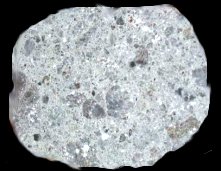 |
Achondrites
are
stony Meteorites that contain no chondrules.
Scientists believe that some of these meteorites originated on the surface of the Moon or Mars, while others may have originated on the Asteroids Vesta, Angelina, Nysa and others. 7.8 % of meteorites are achondrites. It has been suggested that some angrites and enstatites could have originated on the planet Mercury. |
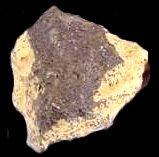 |
82%
of all Meteorites are Chondrites: these contain
chondrules, and are therefore among the oldest rocks in the Solar System. Chondrites contain varying amounts of nickel & iron, and are generally attracted by a strong magnet. They may display evidence of their fiery passage through the atmosphere in the form of dark fusion crust and surface 'thumb-printing' |
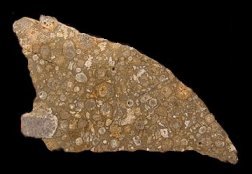 |
This
is a slice of a Carbonaceous Chondrite, showing
the
typical dark matrix, large chondrules, coloured clasts and whitish calcium/aluminium inclusions of this type of stone. Over a hundred amino acids (including eight of those found in terrestrial life) have been identified in these meteorites, causing many biologists to suggest that life may have been 'seeded' on Earth in this way! |
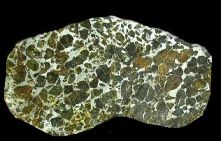 |
Pallasites
are widely believed to have originated at the
core / mantle boundary of small planets. They consist of a nickle-iron matrix, in which are suspended crystalline fragments of minerals such as olivine and pyroxine. Pallasites are very rare, and make up around 1% of all falls. |
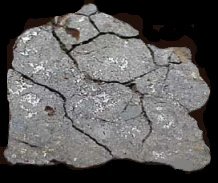 |
The
origin of Mesosiderite stony irons is, as
yet, a mystery!
They consist of a stony matrix with varying amounts of metal suspended randomly throughout. It is assumed that they were formed during a massive impact between two well-differentiated bodies. |
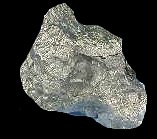 |
Iron
meteorites make up around 5% of all falls. They
largely
consist of Nickel and Iron with varying amounts of rarer metallic elements such as Niobium and Iridium. When cut and polished, irons often display the characteristic Widmanstatten pattern. |